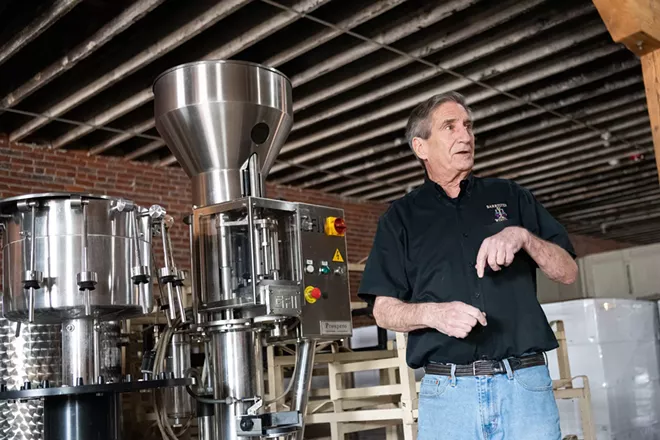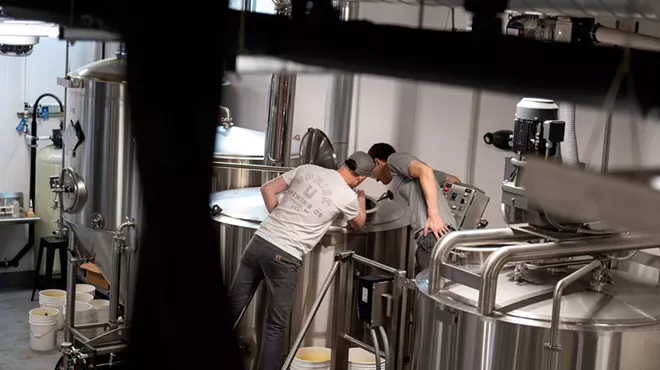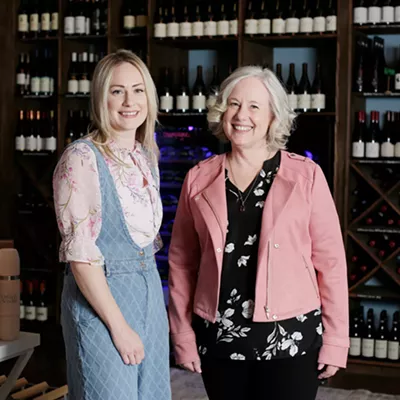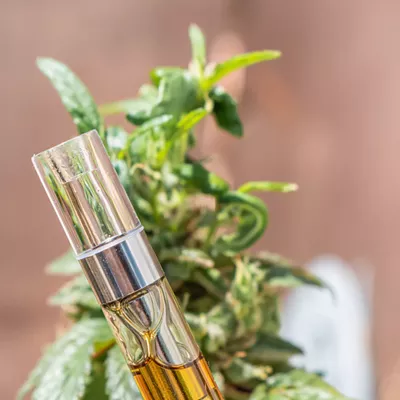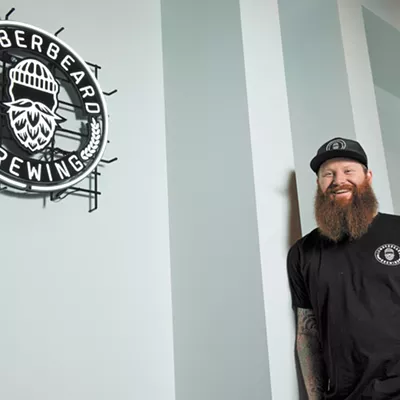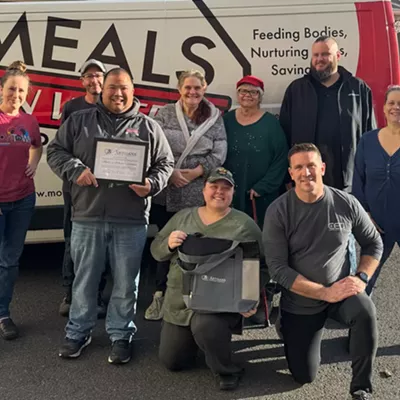In the ambiently lit headquarters of Barrister Winery, towering machines and voluminous storage totes lay behind the brick walls. After harvest, this is where the winemaking process begins.
While the small, delicate grapes that evolve into a rich bottle of wine might seem like a minor part of the process, Greg Lipsker, a co-owner of Barrister, says they have the ability to make or break the final product.
"If you can buy decent grapes and do everything perfectly, all you can ever make is decent wine," Lipsker says. "If you can buy great grapes, then you just try not to screw it up."
Barrister Winery sources almost all its grapes from the Columbia Valley, which Lipsker says produces high quality grapes due to the ancient Missoula flood's effects on the region's soil composition and geography.
SPRING RELEASE WEEKEND
May 12-14The Spokane Winery Associations' 13 members showcase new releases, wine specials and more. Check each winery's website for more on what's planned, or visit spokanewineries.com.
Every harvest, Barrister receives over one hundred tons of grapes. The fruit is lifted by a forklift to the top of the crusher destemmer, where it meets a series of paddles that knock the grapes off their stems, which get augered out of the machine. The grapes are then crushed between two corrugated rollers.
The box-like fermentation tank below fills up with 3,000 pounds of grapes and juice. Once yeast is mixed in, the fermentation begins.
Barrister Winery primarily produces red wines. The fermentation causes the liquid and the grape skins to rise to the surface, so four times a day the skins are pushed back down. This keeps them from drying out and turning the wine to vinegar, while also allowing the wine to absorb more color.
After 10 days, the wine has finished fermenting and goes into a barrel where it ages anywhere from one to five years.
Barrister also produces a white wine — which goes through the same process — but after being crushed, the juice is poured into towering cylindrical, dimpled fermentation tanks. The grape skins are also immediately discarded from the juice to prevent color from seeping into it.
The dimples of the tank encapsulate an outer wall separate from the wine where glycol is pumped through to chill it to 35 degrees. Once the yeast is added, the wine ferments for three and a half months in the chilled tank.
BARRISTER WINERY
Winery: 1213 W. Railroad Ave.; open Sun-Thu noon-6 pm, Wed-Sat noon-7 pm (open until 9 pm on Wed/Fri)Tasting Room: 203 N. Washington St.; open Sun-Mon noon-6 pm, Tue-Thu noon-7 pm, Fri-Sat noon-9 pm
barristerwinery.com
Rather than going into a barrel to age, it gets heat and cold stabilized in the tanks to keep the wine from becoming hazy and to prevent crystals forming when it gets bottled.
The winery's basement is filled with 500 barrels for its red wines, each capable of producing 300 bottles of wine.
Made from different varieties of oak, each barrel adds different flavor profiles and notes to the wines. Over half of Barrister's barrels are French oak, a quarter are American oak, and a few are Hungarian and Bulgarian oak.
"American oak is going to have more vanillin in the chemical composition of the wood, so we're going to get more vanilla notes off of it," Lipsker says. "With the French, we're gonna get more spice, more molasses."
The Hungarian oak barrels are the same species of wood as the French oak, but grow in different soils and climates. The result: a richer, nuttier flavor.
"The Bulgarian oak, it's kind of like coffee, chocolate, mocha and espresso on steroids," he adds.
While Lipsker says Barrister's cabernet sauvignon primarily is cured in French oak and their cabernet franc mainly ages in American oak, Barrister's wines are often blended and use a combination of oak wood to achieve more complex layers of flavor.
Each barrel is toasted at different levels, ranging from untoasted to heavy. As the wine ages, it extracts flavor and aroma from the toasted oak and produces a more complexly flavored wine.
Lipsker says they add sulfur dioxide to the barrels and constantly top them off to prevent the wine from interacting with the oxygen as it evaporates. If they don't, it could turn to vinegar.
Generally, wine barrels are racked about every three months. To do this, wine is pumped out, sediment is rinsed out, and the barrel is refilled with the wine.
Barrister, however, only racks its wines once. About 25,000 train cars heading through downtown Spokane pass by the winery yearly, and the vibrations from the trains gently vibrate and settle the barrels — essentially accomplishing the same result as racking.
When the wines are done aging, Lipsker and co-owner Michael White sit down with some of their staff. They begin blending wines from different barrels to create a multidimensional mixture that fits with Barrister's gentle, rich and fruit-forward style.
After wine is ready to bottle, it's pumped through a filter on the bottling machine, poured into bottles and then corked. Lipsker says Barrister's team fills and corks 60 cases an hour, followed by five to six more hours spent labeling the bottles and sealing a capsule over the bottleneck.
Each spring to streamline its production process, Barrister rents a semi-truck with elaborate bottling equipment that produces 300 cases of wine an hour, five times the rate of their own equipment.
The 6,000 cases of red wines and 300 cases of white wines that Barrister Winery expects to produce annually are sold at its two Spokane tasting rooms and shipped to different retailers in Eastern Washington and North Idaho.
"I love the process, the winemaking process, the creative process," Lipsker says. "We've been fortunate to get into some very good vineyards, so we've been able to make wine we've been proud of." ♦


